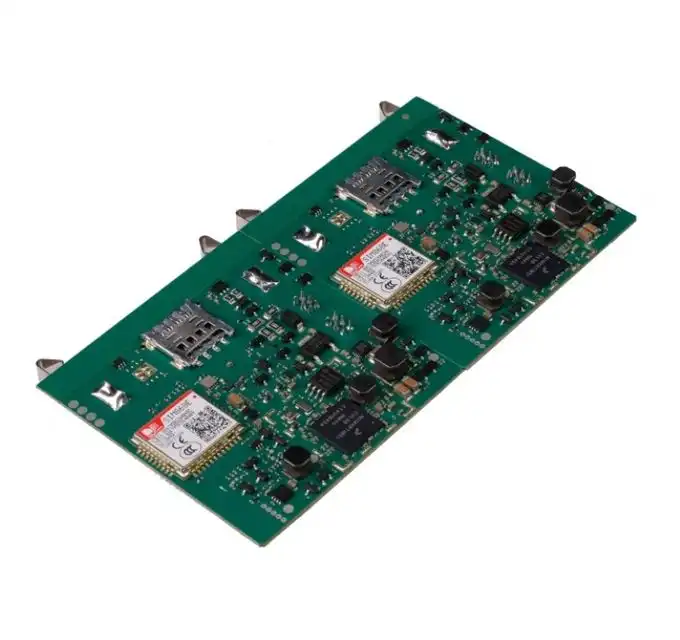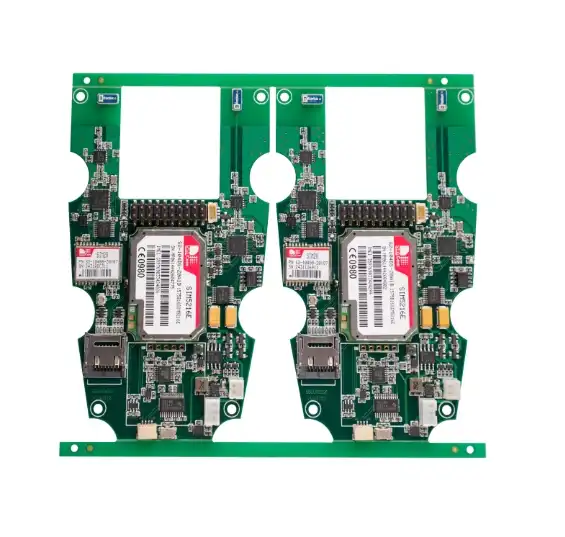The Evolution of Global PCB Manufacturing Landscape
The printed circuit board (PCB) fabricating industry is experiencing a critical change in 2025. The worldwide advertise is getting to be progressively competitive, with a few nations competing for dominance in this basic segment of hardware generation. This move is driven by different variables, counting mechanical progressions, changing financial scenes, and geopolitical influences.
China, long recognized as the world's plant for gadgets, is anticipated to keep up its position as the driving PCB producer. The country's tremendous fabricating foundation, coupled with proceeded speculations in inquire about and advancement, positions it well for future competitiveness. Chinese PCB producers are progressively centering on high-density interconnect (HDI) sheets and adaptable PCBs, zones that require progressed innovation and exactness engineering.
However, the scene is not inactive. Other Asian nations are making critical strides in PCB Manufacturer. Taiwan, with its solid establishment in semiconductor generation, is leveraging this mastery to improve its PCB fabricating capabilities. Taiwanese producers are especially solid in high-end PCBs for applications such as 5G innovation and car electronics.
South Korea and Japan, known for their innovative ability, are too key players in the PCB fabricating field. These nations exceed expectations in creating high-quality, high-reliability PCBs for businesses like customer hardware, car, and therapeutic gadgets. Their center on development and quality control guarantees their competitiveness in the worldwide market.
To assist investigate this subject, I ought to consider:
1. The affect of rising advances on PCB fabricating
2. The part of government arrangements in supporting PCB businesses
3. The impact of worldwide supply chain elements on PCB fabricating competitiveness
Emerging Players and Niche Markets
While conventional powerhouses proceed to overwhelm, unused players are rising in the PCB fabricating scene. Nations like Vietnam and India are quickly creating their gadgets fabricating segments, counting PCB generation. These countries offer a combination of cost-effectiveness and making strides mechanical capabilities, making them progressively alluring for PCB manufacturing. Vietnam, in specific, has seen critical development in its gadgets fabricating division.
With a youthful, talented workforce and government bolster for high-tech businesses, Vietnamese PCB producers are picking up recognition for their quality and productivity. The nation is getting to be an option for companies looking to broaden their supply chains beyond China. India, with its "Make in India" activity, is moreover making strides in PCB fabricating. The country's solid IT division gives a strong establishment for creating progressed PCB advances. Indian producers are centering on specialty markets, such as aviation and defense, where high-reliability PCBs are crucial.
In Europe, nations like Germany proceed to be competitive in specialized PCB fabrication. German producers exceed expectations in creating high-tech PCBs for businesses such as car, mechanical mechanization, and restorative gadgets. Their center on quality, exactness, and development keeps them significant in the worldwide advertise, especially for high-value, low-volume PCB production.
Technological Advancements Shaping PCB Manufacturing Competitiveness
As we move towards 2025, innovative headways are playing a vital part in deciding the competitiveness of PCB Manufacturer over diverse nations. The capacity to deliver complex, high-performance PCBs is getting to be progressively imperative as gadgets proceed to advance and miniaturize.
One of the key ranges of headway is in the generation of high-density interconnect (HDI) PCBs. These sheets permit for higher component thickness and progressed electrical execution, vital for cutting edge electronic gadgets. Nations with producers able of creating progressed HDI PCBs, such as China, Taiwan, and Japan, are likely to keep up a competitive edge.
Another noteworthy mechanical slant is the expanded request for adaptable and rigid-flex PCBs. These sheets offer special focal points in terms of space investment funds and unwavering quality, making them basic for applications in wearable innovation, therapeutic gadgets, and aviation. Producers who can proficiently deliver high-quality adaptable PCBs will be well-positioned in the competitive scene of 2025.
Additive fabricating strategies, such as 3D printing of PCBs, are moreover picking up footing. This innovation permits for quick prototyping and the creation of complex geometries that are troublesome to accomplish with conventional fabricating strategies. Nations with a solid center on inquire about and advancement in this range, like the Joined together States and Germany, might pick up a competitive advantage in certain specialty markets.
To delve deeper into this aspect, I should consider:
1. The role of artificial intelligence and machine learning in PCB design and manufacturing
2. The impact of environmental regulations on PCB manufacturing processes
3. The potential for new materials in PCB production
Smart Manufacturing and Industry 4.0
The integration of smart manufacturing principles and Industry 4.0 technologies is becoming a key differentiator in PCB manufacturing competitiveness. Countries that are at the forefront of implementing these technologies in their manufacturing processes are likely to gain a significant advantage.
Smart factories equipped with advanced automation, real-time monitoring, and data analytics capabilities can significantly improve production efficiency and quality control. This is particularly important in PCB manufacturing, where precision and consistency are crucial. Countries like Germany, Japan, and South Korea, known for their expertise in industrial automation, are leading the way in implementing these technologies in PCB production.
The use of artificial intelligence (AI) and machine learning in PCB design and manufacturing is another area where technological advancement is driving competitiveness. These technologies can optimize PCB designs, predict potential manufacturing issues, and improve overall production efficiency. Countries with strong AI research and development capabilities, such as the United States and China, are well-positioned to leverage these technologies in PCB manufacturing.
Furthermore, the implementation of advanced testing and quality control measures is becoming increasingly important. Automated optical inspection (AOI), X-ray inspection, and in-circuit testing (ICT) are becoming standard in high-end PCB manufacturing. Countries with manufacturers that can effectively implement and integrate these advanced testing methods will have a competitive edge in producing high-reliability PCBs for critical applications.
Factors Influencing Global PCB Manufacturing Competitiveness
As we look towards 2025, several factors beyond technological capabilities are shaping the competitiveness of PCB manufacturers across different countries. These factors include economic considerations, geopolitical influences, and environmental regulations.
Cost-effectiveness remains a significant factor in PCB manufacturing competitiveness. While labor costs have traditionally been a key consideration, the increasing automation of PCB production is somewhat leveling the playing field. However, countries that can offer a balance of cost-effective production and high-quality output, such as China and emerging players like Vietnam, are likely to maintain a competitive advantage.
Supply chain resilience has become an increasingly important factor, particularly in light of recent global events. Countries that can offer stable and diversified supply chains for raw materials and components used in PCB manufacturing are likely to be more competitive. This factor is driving some companies to consider a "China plus one" strategy, looking at alternative manufacturing locations to reduce supply chain risks.
Environmental regulations and sustainability practices are also becoming increasingly important in PCB manufacturing. Countries with stringent environmental standards, such as those in the European Union, are driving innovations in eco-friendly PCB production methods. Manufacturers that can meet these standards while maintaining cost-effectiveness will have a competitive edge in the global market.
To provide a comprehensive view, I should also consider:
1. The impact of trade policies and international relations on PCB manufacturing
2. The role of intellectual property protection in fostering innovation in PCB technology
3. The influence of skilled workforce availability on PCB manufacturing competitiveness
Innovation and Research & Development
As we move towards 2025, innovative headways are playing a vital part in deciding the competitiveness of PCB producers over diverse nations. The capacity to deliver complex, high-performance PCBs is getting to be progressively imperative as gadgets proceed to advance and miniaturize. One of the key ranges of headway is in the generation of high-density interconnect (HDI) PCBs. These sheets permit for higher component thickness and progressed electrical execution, vital for cutting edge electronic gadgets.
Nations with producers able of creating progressed HDI PCBs, such as China, Taiwan, and Japan, are likely to keep up a competitive edge. Another noteworthy mechanical slant is the expanded request for adaptable and rigid-flex PCBs. These sheets offer special focal points in terms of space investment funds and unwavering quality, making them basic for applications in wearable innovation, therapeutic gadgets, and aviation. Producers who can proficiently deliver high-quality adaptable PCBs will be well-positioned in the competitive scene of 2025.
Additive fabricating strategies, such as 3D printing of PCBs, are moreover picking up footing. This innovation permits for quick prototyping and the creation of complex geometries that are troublesome to accomplish with conventional fabricating strategies. Nations with a solid center on inquire about and advancement in this range, like the Joined together States and Germany, might pick up a competitive advantage in certain specialty markets.
Conclusion
In 2025, the global landscape of PCB manufacturing is set to be highly competitive and dynamic. While traditional powerhouses like China, Taiwan, and Japan are likely to maintain their strong positions, emerging players and niche markets are reshaping the industry. The most competitive PCB manufacturers will be those that can balance cost-effectiveness with technological innovation, quality, and sustainability.
For companies seeking reliable PCB suppliers and manufacturers, it's crucial to consider factors beyond just cost. Look for partners that offer comprehensive services, including advanced PCB assembly, rigorous testing procedures, and the ability to handle complex, multi-layer designs. Manufacturers that provide one-stop solutions, from prototype to mass production, with a focus on high reliability and advanced technologies like HDI and microvia, are likely to be the most competitive and valuable partners in the evolving PCB industry.
FAQ
What services do competitive PCB manufacturers typically offer?
Competitive PCB manufacturers often provide a comprehensive range of services, including rapid prototyping of multilayer PCBs, SMT and through-hole assembly, AOI and X-ray inspection, and full turnkey PCBA services. They typically offer high-density HDI PCB manufacturing, flexible and rigid-flex PCB production, and specialize in automotive and industrial-grade PCBs. Many also provide BOM procurement, one-stop PCBA services, and reliability testing to ensure high-quality, long-lasting products.
Advanced PCB Manufacturing Capabilities | Ring PCB
At Ring PCB, we pride ourselves on our advanced engineering capabilities for precision PCB manufacturing. Our high-density stack-up technology allows us to produce 2-48 layer boards with blind and buried vias, achieving 3/3mil trace/spacing and ±7% impedance control. This makes us ideal for cutting-edge applications in 5G, industrial control, medical devices, and automotive electronics. Our smart manufacturing facility, equipped with LDI laser exposure, vacuum lamination, and flying probe testers, adheres to IPC-6012 Class 3 standards. For inquiries about our advanced PCB manufacturing services, please contact us at [email protected].
References
1. Global PCB Market Report 2025: Trends, Forecasts, and Competitive Analysis. Industry Research Firm.
2. The Future of PCB Manufacturing: A Comparative Study of Global Leaders. Journal of Electronics Manufacturing.
3. Emerging Technologies in PCB Production: Impact on Global Competitiveness. IEEE Transactions on Electronics Packaging Manufacturing.
4. Sustainability in PCB Manufacturing: A Global Perspective. International Journal of Sustainable Engineering.
5. The Role of Industry 4.0 in Reshaping PCB Manufacturing Competitiveness. Smart Factory Journal.





